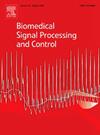FNBUI-NET: A multi-task model for fetal nasal bone ultrasound image defect detection and classification
IF 4.9
2区 医学
Q1 ENGINEERING, BIOMEDICAL
引用次数: 0
Abstract
In prenatal ultrasound diagnosis, the accurate identification and timely assessment of the fetal nasal bone are crucial for monitoring the growth and development of the fetus’s face. However, the small size and complex anatomy of the fetal nasal bone make it difficult for doctors to determine if there are any defects. Motivated by this critical and intricate ultrasound task, a multi-task deep learning model, FNBUI Network (FNBUI-NET), was designed to detect fetal nasal bone defects and classify fetal nasal bone ultrasound images (FNBUI) in real-time. The model reconsiders and balances the relationship between inference speed and computational accuracy in object detection algorithms, innovatively proposing the integration of the ShuffleNetV2 (Shuffle_Block) network with the Content-Aware ReAssembly of Features (CARAFE) module to process data tensors of varying sizes from clinical settings, and employed Coordinate Attention (CA) for feature compression encoding to extract consistency constraints within chaotic feature distributions. The FNBUI dataset is also proposed to support the research on fetal nasal bone detection and classification, which 1104 ultrasound images with three objects (i.e., normal, dysplasia, absence) of fetal nasal bones from 731 mid-pregnancy women for training and testing the performance of FNBUI-NET. The experiments show that FNBUI-NET can accurately classify fetal ultrasound images and detect nasal bone defects, achieving an [email protected] of 0.985 in nasal bone detection and an accuracy of 0.981 in classification, outperforming 18 popular current methods. It provides a valuable tool for less experienced and younger sonologists, assisting them in the examination and diagnosis of fetal nasal bone defects.
求助全文
约1分钟内获得全文
求助全文
来源期刊

Biomedical Signal Processing and Control
工程技术-工程:生物医学
CiteScore
9.80
自引率
13.70%
发文量
822
审稿时长
4 months
期刊介绍:
Biomedical Signal Processing and Control aims to provide a cross-disciplinary international forum for the interchange of information on research in the measurement and analysis of signals and images in clinical medicine and the biological sciences. Emphasis is placed on contributions dealing with the practical, applications-led research on the use of methods and devices in clinical diagnosis, patient monitoring and management.
Biomedical Signal Processing and Control reflects the main areas in which these methods are being used and developed at the interface of both engineering and clinical science. The scope of the journal is defined to include relevant review papers, technical notes, short communications and letters. Tutorial papers and special issues will also be published.
 求助内容:
求助内容: 应助结果提醒方式:
应助结果提醒方式:


